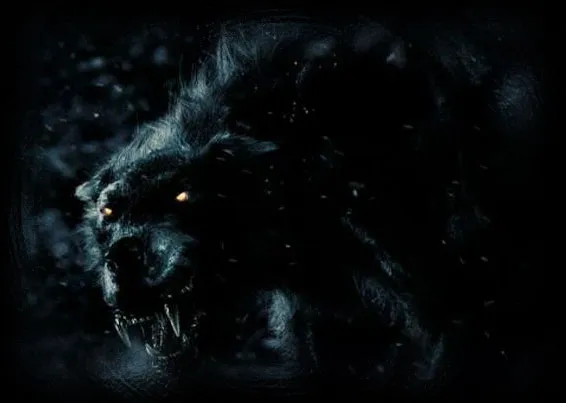In Old Norse, vargr is derived from the reconstructed Proto-Germanic *wargaz, ultimately derived from the reconstructed Proto-Indo-European (PIE) root *werg̑ʰ- "destroy". In Beowulf, Grendel's mother is described (line 1514) as a grund-wyrgen, which may be translated as "cursed creature of the depths", "bottom-dwelling monster" etc.
vargr (compare modern Swedish varg "wolf") has arisen as a noa-word for úlfr, the normal Old Norse term for "gray wolf" which is related to similar words in other Indo-European languages and is derived from the reconstructed Proto-Indo-European noun *wĺ̥kʷos ("wolf") and, probably also, the PIE adjective *wl̥kʷós "dangerous". These words comprise Proto-Tocharian *wä́lkʷë, Proto-Italic *lukʷos, Proto-Balto-Slavic *wilkas, Old Albanian ulk, Greek *lýkos, Proto-Iranian *verk Sanskrit vṛka, Avestan vehrka, Mazandarani varg, Zazaki verg, Old Persian varka- and Persian gorg, among others, all meaning "wolf". Despite their superficial similarity to Old Norse vargr, the various Indo-Iranian forms are not related to it but derive from *wĺ̥kʷos.

In Norse mythology, wargs are in particular the mythological wolves Fenrir, Sköll and Hati. In the Hervarar saga, King Heidrek is asked by Gestumblindi (Odin),
What is that lamp
which lights up men,
but flame engulfs it,
and wargs grasp after it always.
Heidrek knows the answer is the Sun, explaining,
She lights up every land and shines over all men, and Skoll and Hatti are called wargs. Those are wolves, one going before the sun, the other after the moon.
Wolves also served as mounts for more or less dangerous humanoid creatures. For instance, Gunnr's horse was a kenning for "wolf" on the Rök Runestone, in the Lay of Hyndla, the völva (witch) Hyndla rides a wolf and to Baldr's funeral, the giantess Hyrrokkin arrived on a wolf.